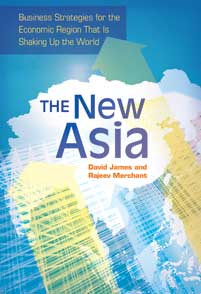 When considering opportunities in India, it is well to note that India is unique in being one of the few truly democratic nations in Asia that is transitioning to a globalized market economy. Almost all the other emerging Asian countries are doing so with governmental regimes that are primarily authoritarian and non-democratic. This means that the transition is at times a bit more frenetic and uneven than in other Asian countries, and that opportunities need to be viewed through a different prism, one that reveals added economic dimensions. Seizing an opportunity is often more complicated than it first appears.
When considering opportunities in India, it is well to note that India is unique in being one of the few truly democratic nations in Asia that is transitioning to a globalized market economy. Almost all the other emerging Asian countries are doing so with governmental regimes that are primarily authoritarian and non-democratic. This means that the transition is at times a bit more frenetic and uneven than in other Asian countries, and that opportunities need to be viewed through a different prism, one that reveals added economic dimensions. Seizing an opportunity is often more complicated than it first appears.
For one thing, the states of India are very individualistic, both in their populations and in their government and business practices. Different languages are often spoken from state to state. Approximately 41 percent of the country’s entire population speaks Hindi and 10 percent speaks English, but there are numerous ethnic groups in each state and many indigenous languages spoken. These differences will affect the strength of target consumer markets in a given state and the steps that will need to be taken to enter its markets. As mentioned earlier in this chapter under “A Rising Middle Class,” there will be exceptional opportunities for products and services that respond to lower income consumers, but the interests of consumers will vary from state to state.
Opportunities in India, and the economy itself, are seriously constrained by a lack of adequate infrastructure. Public and private investment has lagged in the industries that provide power, telecommunications, roads, ports, airports, mining and metals production. In addition, little interest has been shown in recent years for investment in projects that would improve railways, irrigation, water supply and sanitation, ports and power distribution industries. Experts estimate that problems associated with India’s infrastructure annually reduce its gross domestic product growth by about two percentage points.
India also faces long-term shortages of coal, oil and natural gas. This will force the importation of fossil fuels at high cost to the economy for years to come. And as a result of energy shortages and infrastructure needs, it is sometimes difficult to sustain business operations. Because electrical blackouts and brownouts often occur throughout India, it is common practice for businesses to maintain on-site generators for use when there is no electricity. There was an alarming reminder of the country’s electricity deficiencies in July 2012 when electricity blackouts occurred over a period of two days in the northern regions of India, affecting an estimated 620 million people – half the population.
Opportunities in India are also affected by the country’s political and governmental institutions. In this diverse and democratic nation, political dissention often stands in the way of economic progress and reform. Also, the machinery of government, with a bloated bureaucracy and complex regulatory procedures, slows the attainment of business objectives. Corruption in government and in private business transactions add to the burden.
Nevertheless, the multiplicity and breadth of opportunities in India may trump the difficulties of doing business there. Indeed, the government appears to be taking steps to combat the many impediments to opportunity and growth. Measures were introduced in 2012 to attract foreign investment and encourage investment in infrastructure projects and in sectors such as retail. A national board was also established to expedite clearances for infrastructure projects.
On a scale of 1 to 10, the chances are 8 that India’s economy will grow at an average rate of more than 3 percent during the period 2013-2023.
© Copyright 2013 ABC-CLIO
